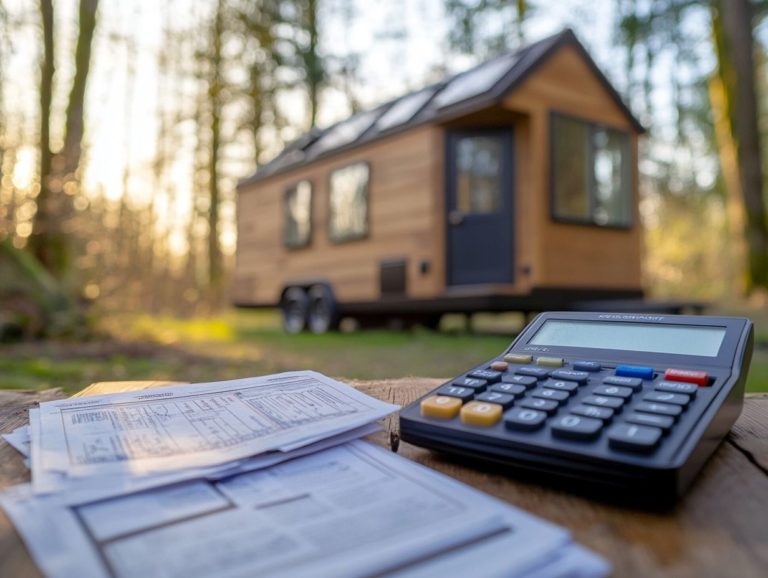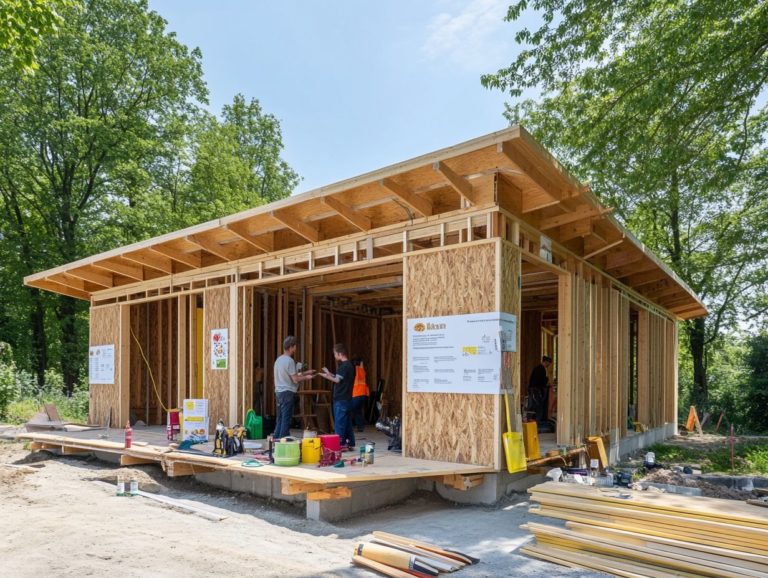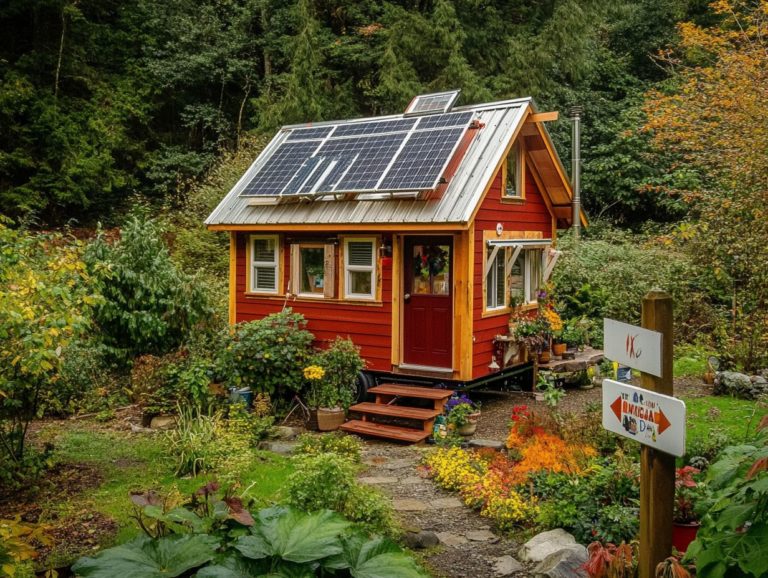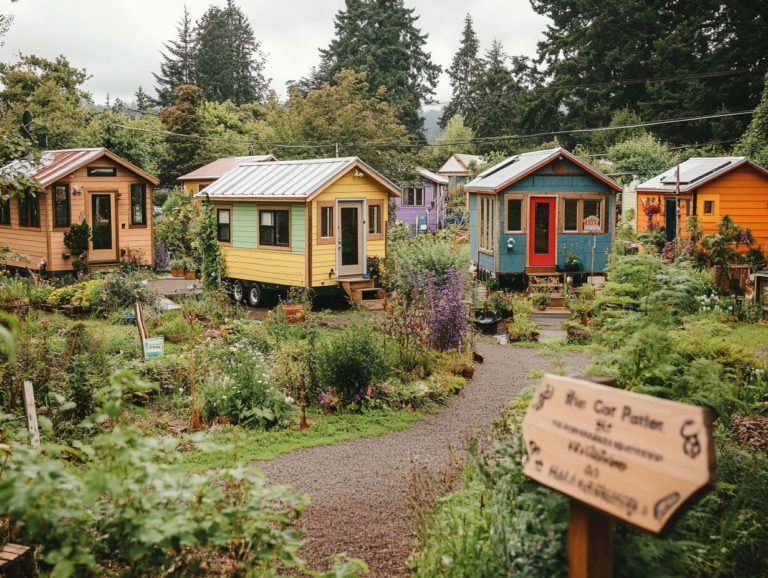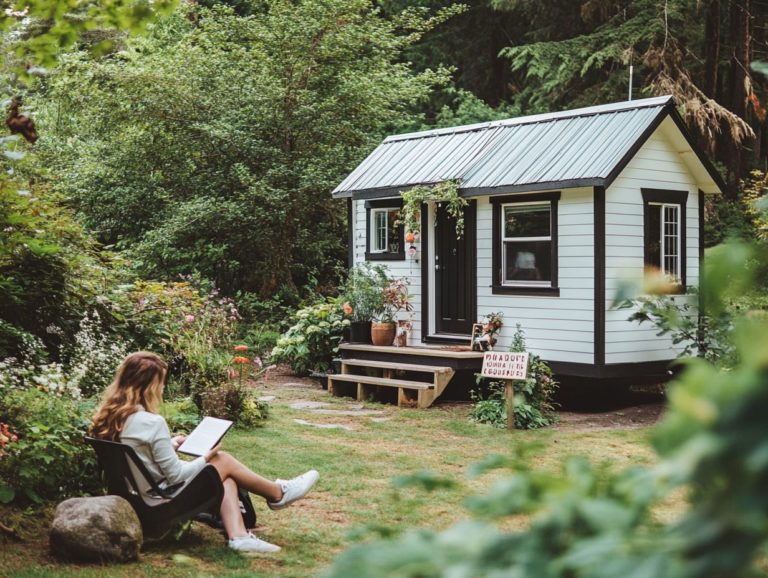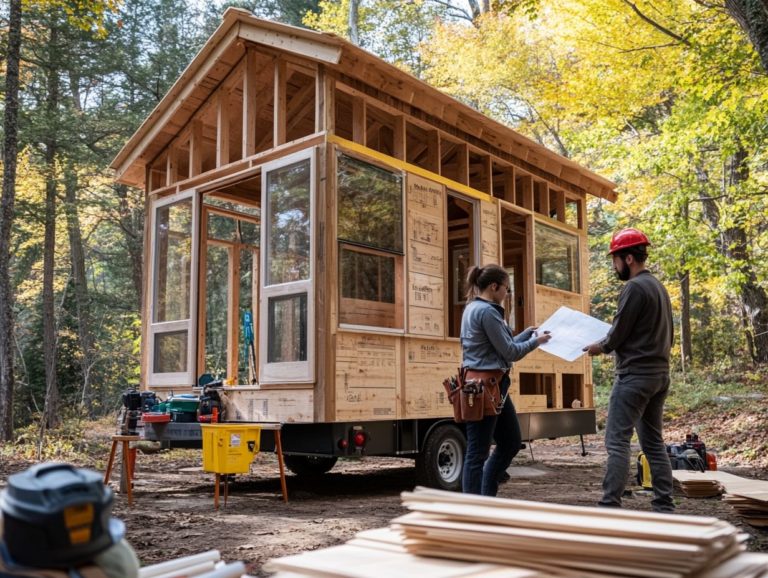Legalities of Tiny House Utilities Installation
Navigating the world of tiny house utilities can feel like an exhilarating adventure. However, it may also present some challenges. As you embrace a more minimalist lifestyle, understanding the legal considerations such as zoning and building codes is essential to avoid potential pitfalls.
This guide lays out everything you need to know, from securing the necessary permits to the intricacies of the installation process. It also explores various utility options, including eco-friendly and off-grid solutions.
Get ready to turn your tiny house dream into a vibrant reality with the right utilities in place.
Contents [hide]
- Key Takeaways:
- Understanding the Basics
- Legal Considerations for Installing Utilities
- Types of Utilities for Tiny Houses
- Installation Process and Costs
- Alternative Options for Tiny House Utilities
- Frequently Asked Questions
- What are the legalities of installing utilities in a tiny house?
- Do I need permits to install utilities in my tiny house?
- Can I connect my tiny house to existing utilities?
- What are the consequences of not complying with building codes for tiny house utilities?
- Can I install solar panels or other alternative energy sources for my tiny house?
- Do I need to hire a licensed professional to install utilities in my tiny house?
Key Takeaways:
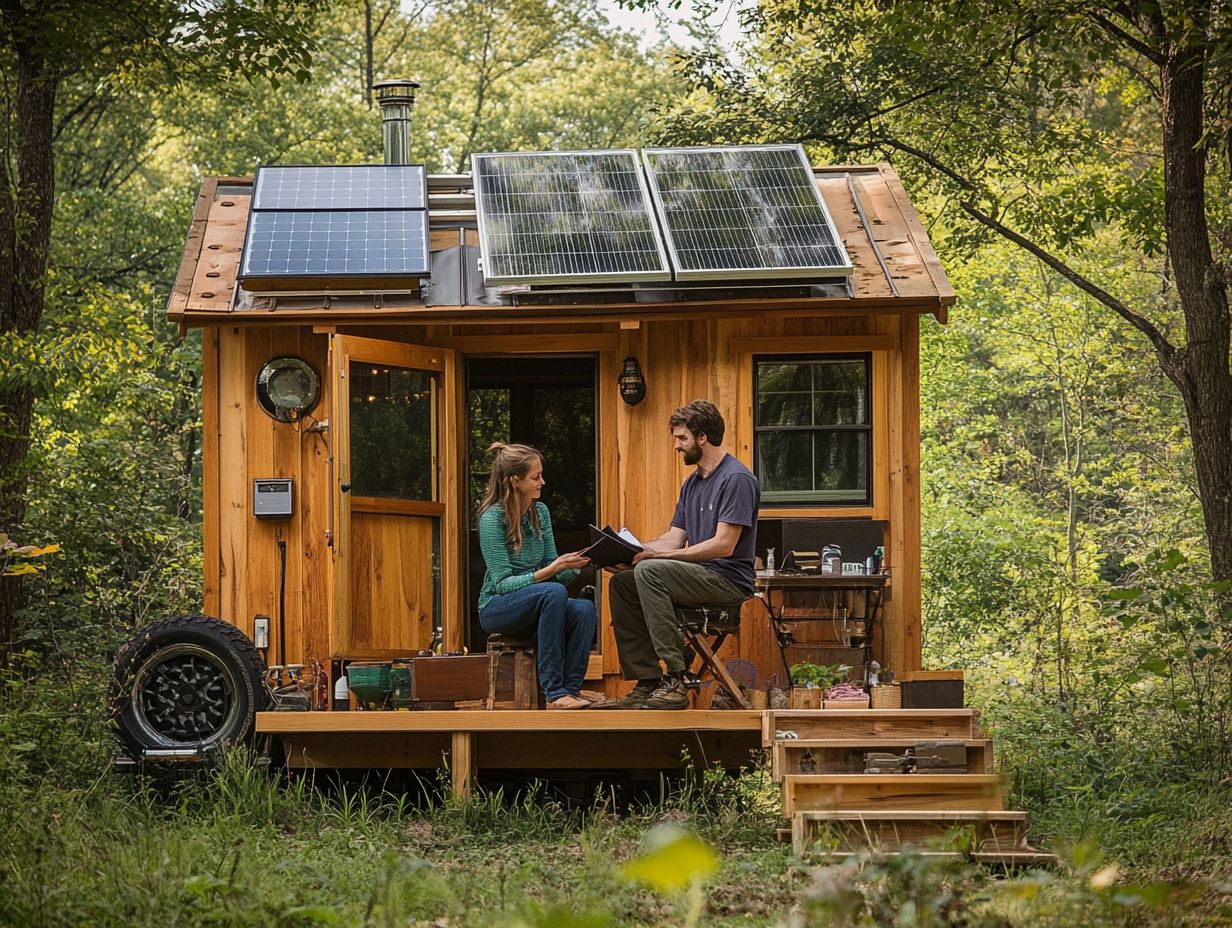
- Understand local zoning and building codes before installing utilities to avoid legal issues.
- Budget wisely for essential utilities like electricity, water, and sewage.
- Explore off-grid solutions and eco-friendly alternatives to reduce costs and environmental impact.
Understanding the Basics
Grasping the fundamentals of tiny homes and tiny houses is crucial for anyone eager to embrace the tiny house movement or design a livable space that adheres to local zoning laws and building codes. This journey demands a thorough knowledge of land requirements, including essential elements like soil type, natural hazards, and accessibility.
These factors are vital for a successful tiny home installation. You also need to know the necessary permits needed for tiny house construction for site clearance, foundation preparation, utility installation, and landscaping features that conform to energy efficiency standards.
Legal Considerations for Installing Utilities
Navigating the legal considerations for installing utilities in tiny homes requires you to develop a thorough knowledge of zoning laws, building codes, and the specific permits required by your local municipality. This diligence ensures that you remain fully compliant with all regulations.
Zoning and Building Codes
Zoning and building codes are crucial to the tiny house movement, shaping where and how you can build your dream tiny home. These regulations vary significantly from one municipality to another, creating a landscape that can be both exciting and daunting.
They dictate everything from the minimum square footage for dwellings to the types of foundations allowed and even the aesthetic features you can incorporate. As a homeowner, you may find yourself navigating a complex maze of rules, where a requirement in one area could be entirely different just a few miles down the road.
This patchwork can lead to significant challenges, such as securing financing, obtaining permits, and ultimately finding the right piece of land. Fortunately, advocates and tiny house enthusiasts are actively pushing for more flexible regulations that align with the growing demand for this sustainable lifestyle. For those looking to navigate the complexities, navigating tiny house legality in rural areas can provide valuable insights.
Engaging with local government officials and participating in community discussions are vital steps you can take toward creating a more accommodating environment for tiny home living.
Permits and Inspections
Obtaining the necessary permits and passing inspections are critical steps in your tiny house construction journey. These actions ensure you meet local building codes and regulations set by your municipality.
Navigating these requirements can feel overwhelming, especially when you’re embracing a smaller living space. You’ll need to familiarize yourself with various permit types, including building, electrical, and plumbing permits. Additionally, understanding the legal requirements for tiny house construction is crucial for a smooth process.
Each municipality has its unique set of rules concerning the construction of tiny homes, and these can differ significantly from one region to another. That’s why it’s essential for you to thoroughly research your local laws and connect with local authorities early in your planning stage, particularly when it comes to understanding tiny house land use laws.
It s wise to maintain an organized file of all documentation related to your construction. Consider attending community meetings where zoning issues are discussed; this can provide valuable insights. Building positive relationships with local officials can also ease the review process, enabling clearer communication and faster approvals.
Types of Utilities for Tiny Houses
Discover the essential utilities that will make your tiny house a comfortable home.
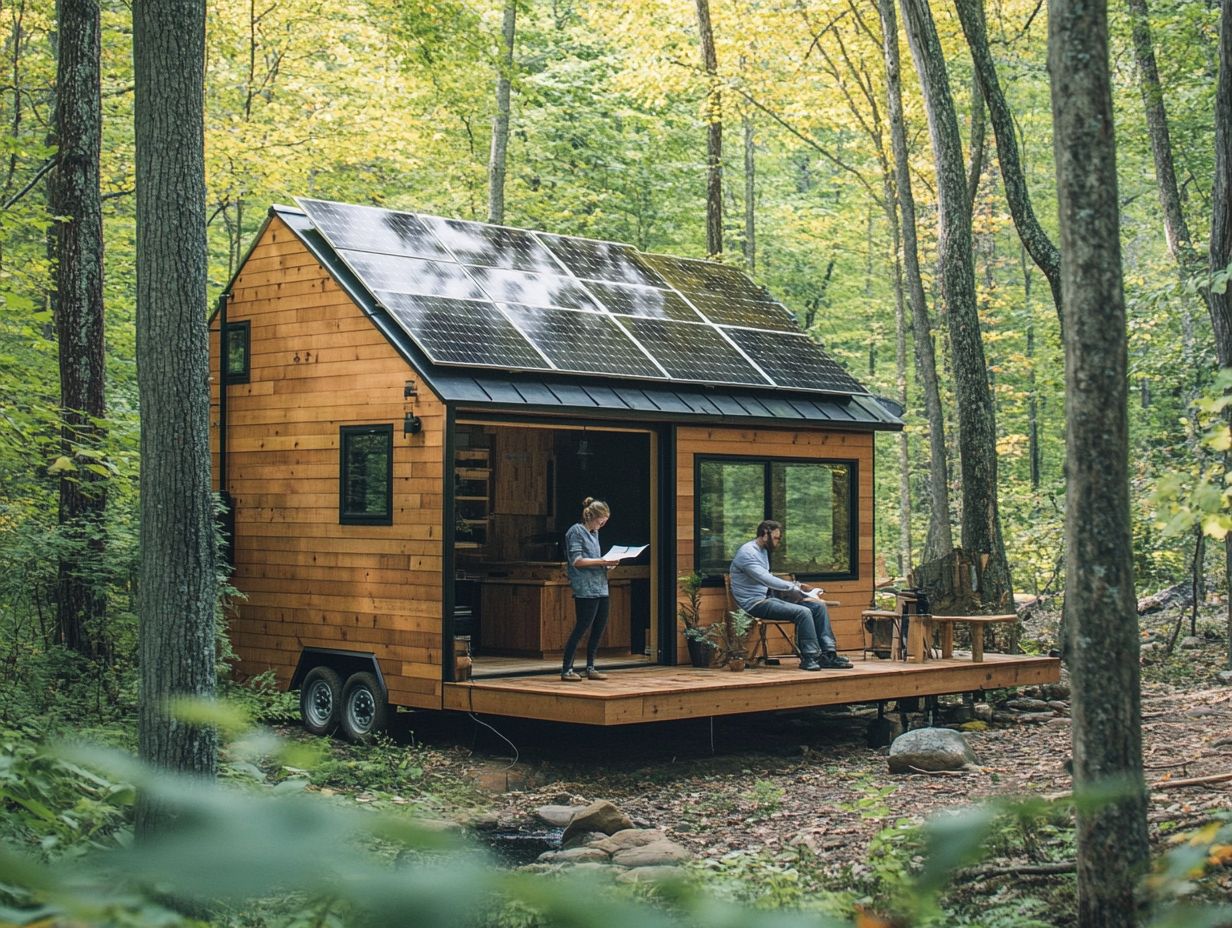
When you explore the utilities for tiny houses, it’s vital to focus on essential components such as electricity, water supply, sewage systems, and effective heating and cooling solutions.
Each element should be thoughtfully designed to enhance energy efficiency and overall functionality. This ensures that your space remains both comfortable and sustainable.
Electricity
Electricity is an essential utility for tiny houses. Understanding how to set up effective utility hookups while maximizing energy efficiency is crucial for your sustainable living journey.
As you begin your tiny home adventure, choosing the right electricity options is vital. Many homeowners find grid connections to be practical for reliable power. You might also consider solar power systems, which are becoming increasingly popular.
This renewable energy alternative not only provides an eco-friendly solution but also presents the potential for long-term savings.
Incorporating battery systems can boost your energy independence by capturing solar energy for later use. By implementing energy-efficient measures like LED lighting and high-efficiency appliances, you can significantly reduce reliance on traditional energy sources. This allows your tiny home to thrive sustainably without compromising on comfort.
Water and Sewage
Water and sewage systems are essential elements to consider when planning your tiny house. Thoughtful planning for utility hookups is crucial for proper sanitation and accessibility.
These systems influence your daily living experience and promote environmental sustainability. When contemplating water supply solutions, explore options like rainwater harvesting or well water. Both can significantly lessen your reliance on municipal supplies.
Similarly, innovative sewage disposal methods like composting toilets and greywater systems (which reuse water from sinks and showers) provide compelling alternatives to conventional septic tanks.
Familiarize yourself with local regulations to ensure compliance and safety. These guidelines help promote public health in your compact living space, allowing you to embrace your minimalist lifestyle with confidence.
Heating and Cooling
Heating and cooling systems are key to your tiny house comfort. Choosing energy-efficient solutions can significantly elevate the livability of such compact spaces.
As you seek optimal comfort, you’ll likely explore various options designed to tackle the unique challenges of limited square footage.
Mini-split systems provide versatile heating and cooling capabilities without the need for ductwork, making them perfectly suited for smaller environments.
Wood stoves not only provide warmth but also create a cozy ambiance, transforming your space into an inviting retreat.
Passive ventilation techniques like strategically placed windows and natural airflow pathways allow you to effectively regulate indoor temperatures while keeping energy consumption low.
By focusing on these sustainable heating and cooling methods, you can enjoy a more efficient and eco-friendly tiny living experience.
Installation Process and Costs
The installation process for utilities in tiny houses can vary widely in complexity and cost. It’s essential to approach budgeting with care.
Ensuring that all systems are installed correctly and efficiently requires thoughtful planning and consideration.
Step-by-Step Guide
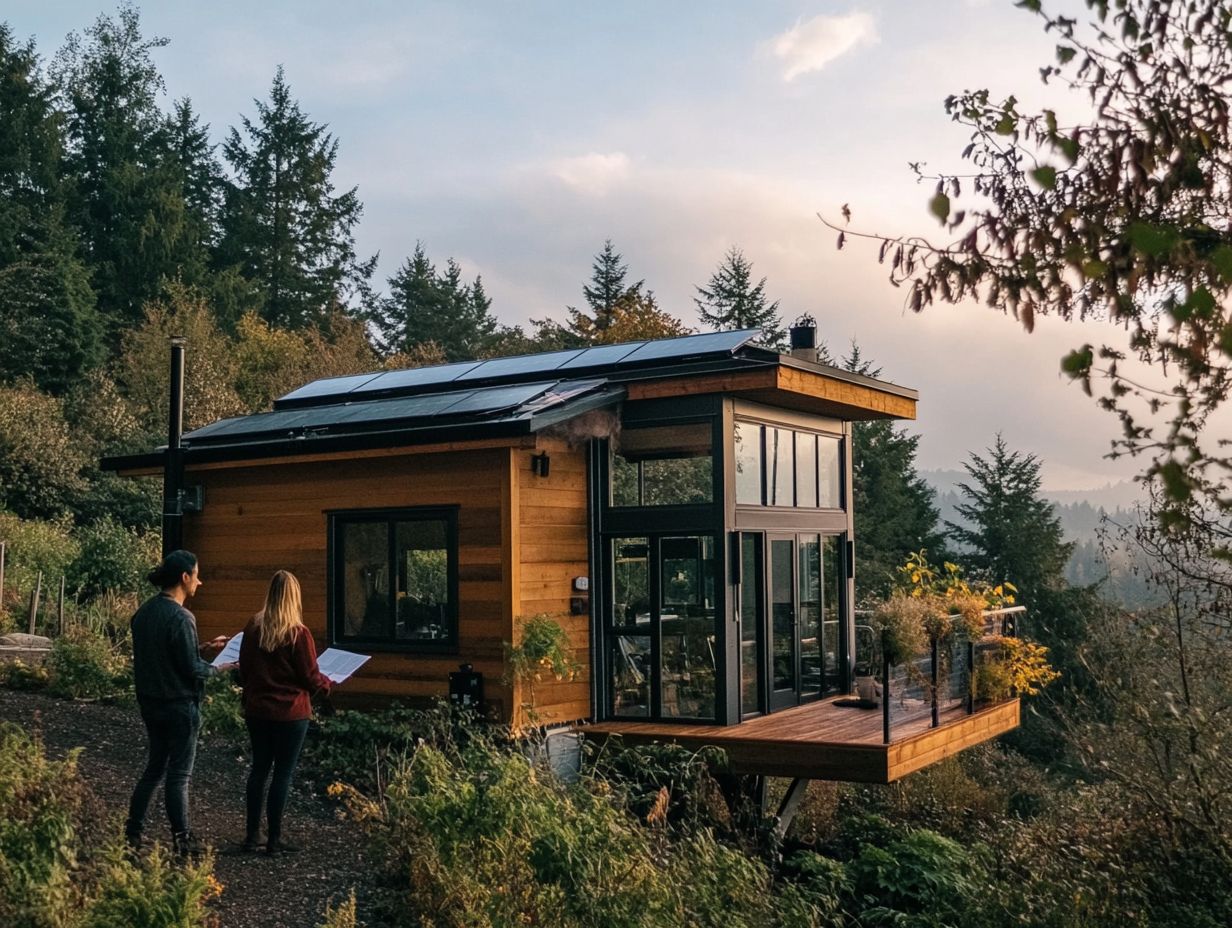
A comprehensive guide for installing utilities in tiny houses will streamline the entire process, ensuring that each system aligns perfectly with local building codes and energy efficiency standards.
As more people embrace simple living, grasping the intricacies of utility installation becomes essential for maintaining comfort and functionality in these compact spaces. This guide navigates the necessary planning and permitting stages while offering insights into effective layouts for plumbing, electrical, and heating, ventilation, and air conditioning (HVAC) systems. Additionally, understanding the legalities of moving a tiny house is crucial for ensuring compliance during your journey.
Each section explores critical considerations, including site evaluation, material selection, and compliance with regulations. Practical tips will help you sidestep common pitfalls, such as overestimating system capacity or overlooking proper insulation, empowering you to create a sustainable, efficient, and compliant tiny home.
Budgeting for Utilities
Budgeting for utilities in a tiny house is vital for managing your costs effectively and ensuring that all necessary installations can be completed without straining your finances.
Carefully assessing your anticipated expenses allows you to allocate the right funds for essential materials like plumbing, wiring, and appliances, along with labor costs for installing these utilities. Embrace a bit of flexibility because actual expenses may vary from your initial estimates.
Creating a financial cushion for unexpected costs will ease your mind during the installation phase, enabling you to tackle unforeseen challenges without throwing your overall budget off course. Additionally, understanding legal obligations for tiny house owners is crucial. With this proactive approach, you can confidently navigate your tiny home journey!
Alternative Options for Tiny House Utilities
Exploring alternative options for tiny house utilities, such as off-grid solutions and eco-friendly alternatives, can significantly elevate your sustainability and self-sufficiency.
Embracing these innovative choices not only reduces your carbon footprint but also empowers you to live in harmony with nature, creating a truly unique and responsible lifestyle.
Off-Grid Solutions
Off-grid solutions for utilities in tiny houses present a remarkable opportunity for sustainable living, empowering you to harness natural resources while minimizing your ecological footprint.
Integrating systems like solar energy allows you to generate your own electricity, significantly reducing reliance on traditional power grids. Composting toilets offer an elegant solution for waste management without the complexities of plumbing, transforming waste into nutrient-rich compost.
Incorporating rainwater collection systems allows for efficient water usage, ensuring you enjoy self-sufficiency while conserving precious resources. These practical innovations elevate your tiny living experience and cultivate a lifestyle deeply rooted in environmental awareness and responsibility. Additionally, understanding the essential legal steps for tiny house building is crucial for a successful transition to this lifestyle.
Eco-Friendly Alternatives
Implementing eco-friendly alternatives for utilities in your tiny house can enhance energy efficiency while minimizing your environmental impact, perfectly aligning with the principles of sustainable living.
Consider options like greywater recycling systems, which enable you to reuse water from sinks and showers for irrigation, effectively conserving vital resources. Additionally, energy-efficient appliances minimize energy consumption, providing the dual benefit of lowering your utility bills while also reducing your carbon footprint.
By choosing these solutions, you contribute to a healthier planet and reap the economic rewards of decreased energy and water usage. Integrating these eco-friendly systems allows you to create a harmonious balance between modern living and environmental stewardship.
Frequently Asked Questions
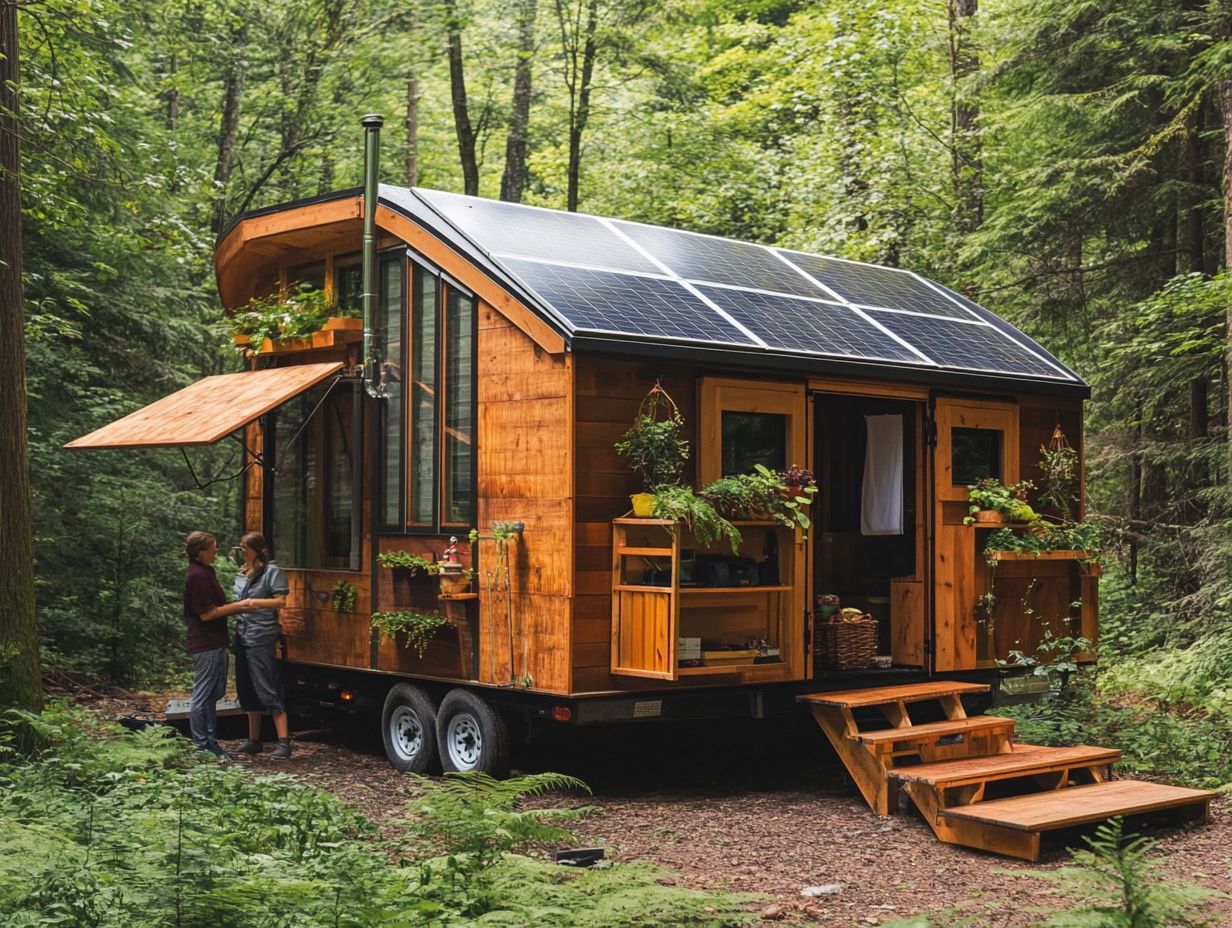
What are the legalities of installing utilities in a tiny house?
The legalities of installing utilities in a tiny house vary by location. Different states and local governments have different regulations.
Do I need permits to install utilities in my tiny house?
In most cases, yes! Many states require permits for electrical, plumbing, and gas installations in tiny houses. Check with your local building department to find out what you need for your project!
Can I connect my tiny house to existing utilities?
It depends on the location and the utilities available. Some areas may allow you to connect to existing water, sewer, and electrical lines. Others may require a separate system. Research and comply with local regulations.
What are the consequences of not complying with building codes for tiny house utilities?
Not complying with building codes can result in fines and forced removal of the tiny house. In some cases, you may face legal action. Following regulations is crucial for your safety and the safety of others.
Can I install solar panels or other alternative energy sources for my tiny house?
Yes, you can! However, you may still need permits and inspections for these installations. It’s essential to research local regulations. Keep in mind that alternative energy sources might not be suitable for all locations and climates.
Do I need to hire a licensed professional to install utilities in my tiny house?
In many cases, yes. Some states and local governments require licensed professionals for electrical, plumbing, and gas installations. Even if it’s not required, hiring a professional ensures the safety and proper functioning of your utilities.

